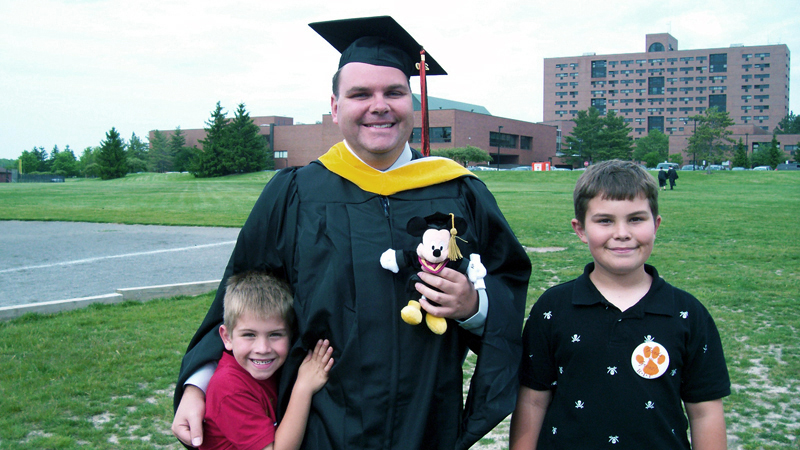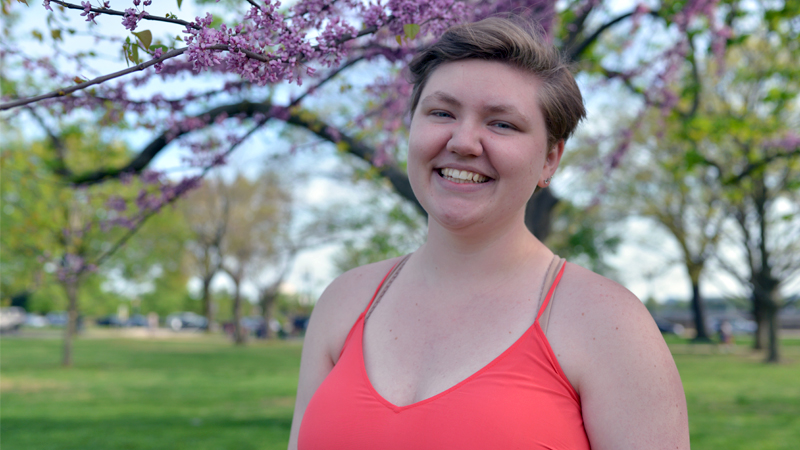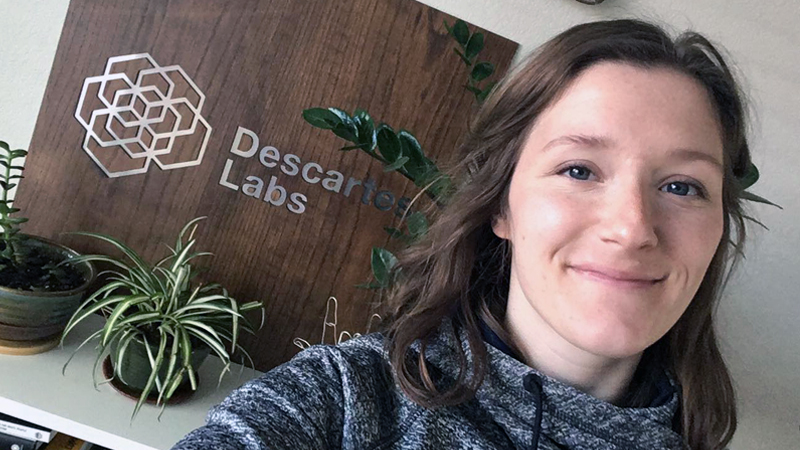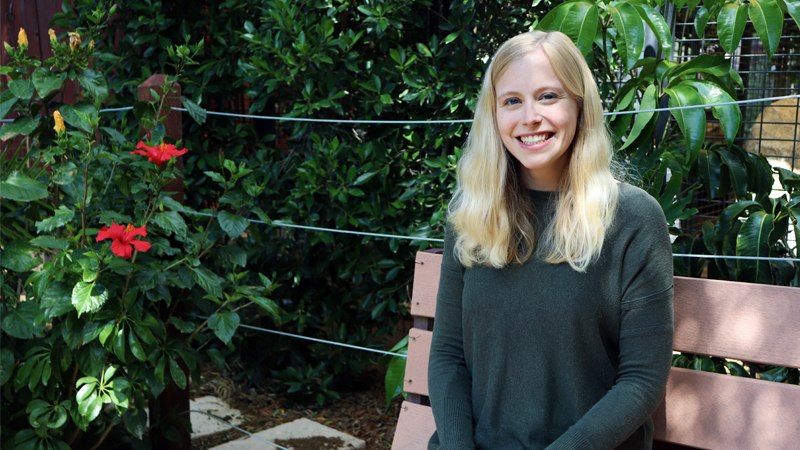Developing Algorithms for Collecting and Processing Satellite Imagery
As a research assistant, Gabriel Peters develops algorithms to collect, organize, and process image data from Landsat satellites in the Digital Imaging and Remote Sensing Laboratory at RIT.
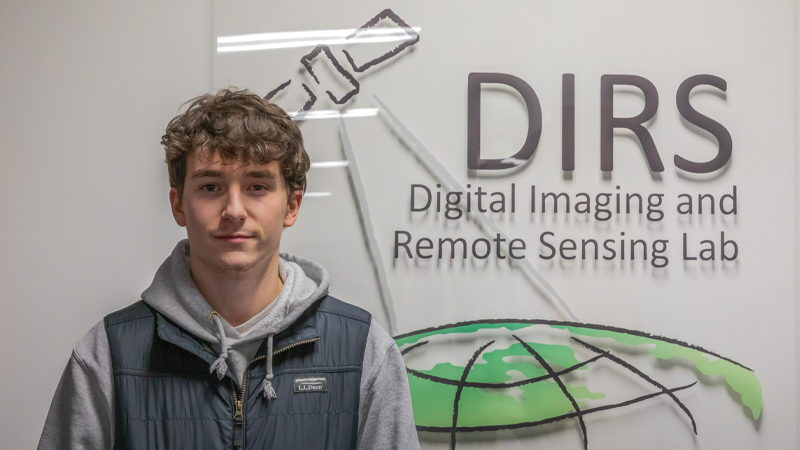
It wasn’t until Gabriel Peters began the Imaging Science program at RIT that he was able to merge his scientific background with his love of photography. The program was the perfect blend for his academic strengths in STEM and personal interests in camera hardware. Now, as a research assistant, he develops algorithms to collect, organize, and process large amounts of multispectral satellite imagery data as part of RIT’s Digital Imaging and Remote Sensing Laboratory (DIRS).
As a whole, Gabriel found the Imaging Science program to be very unique. It begins with the Freshman Imaging Project, where students research, design, and build a functional imaging system from start to finish. “The project covers all aspects of the imaging chain, from capturing an image to processing the image data and then displaying it in a creative manner. It was an excellent experience and introduction to the imaging science field and program itself.”
In class, Gabriel was learning about advanced image processing techniques and became very interested in the methods being used. “My interest in computer vision and imaging processing techniques emerged as I completed projects in class and read papers outside of class on the wide variety of image processing applications. That’s when I began to envision myself in a particular career.”
 When Gabriel began looking for a summer internship, one of his classmates mentioned Dr. Aaron Gerace, a research faculty member in the Chester F. Carlson Center for Imaging Science. After reaching out to Dr. Gerace, Gabriel started working as a research assistant in the DIRS Laboratory at RIT.
When Gabriel began looking for a summer internship, one of his classmates mentioned Dr. Aaron Gerace, a research faculty member in the Chester F. Carlson Center for Imaging Science. After reaching out to Dr. Gerace, Gabriel started working as a research assistant in the DIRS Laboratory at RIT.
“At first, I was assigned the task of developing a Google Earth Engine program that would automatically sort through Landsat 9’s image collections every day and isolate one image that fit the required criteria for the characterization of a sensor defect that emerged after the satellite’s launch in 2021. After completing the task, I quickly took on other projects.”
Gabriel said his next project had to do with collecting data for Landsat 9 to TidBit surface temperature comparative analysis. “Tidbits are miniature sensors that we have placed on buoys in lakes across the United States. By comparing accurate TidBit surface temperature measurements to estimated surface temperature data from Landsat 9, we’re able to evaluate the accuracy of the Landsat estimated measurements over a range of atmospheric conditions.”
Gabriel's most significant contribution was creating an interactive Python program that allows users to obtain Landsat estimated surface temperature data and/or reflectance data after specifying the latitude and longitude of interest. “After running the program, a CSV file will be automatically saved to the user’s system containing all of the desired image data from the specified location during a specific period of time. The program was initially developed for collecting Landsat 8 and 9 radiance and surface temperature data, but could easily be expanded to provide other sets of image data from other image collections. We were soon using the program for other projects we were working on as well. Hopefully, it will be a helpful tool for anyone else conducting similar remote sensing research.”
Gabriel continues to work with Dr. Gerace. He said this opportunity allows him to make connections within the imaging science community and gain valuable experience with image processing, remote sensing, Python, Google Earth Engine, and JavaScript. “Over this summer, I’ve gained an understanding of how the methods I’m learning in class can be used to solve real-world problems. I’ve also gained valuable programming skills for my professional career.”
For students looking for research internships, Gabriel recommends reaching out to professors to see if they, or anyone they know, have any open opportunities. “For internships, I recommend reaching out to RIT Career Services and Co-op. They have been a huge help to me in terms of constructing a good resume and giving general advice.”





